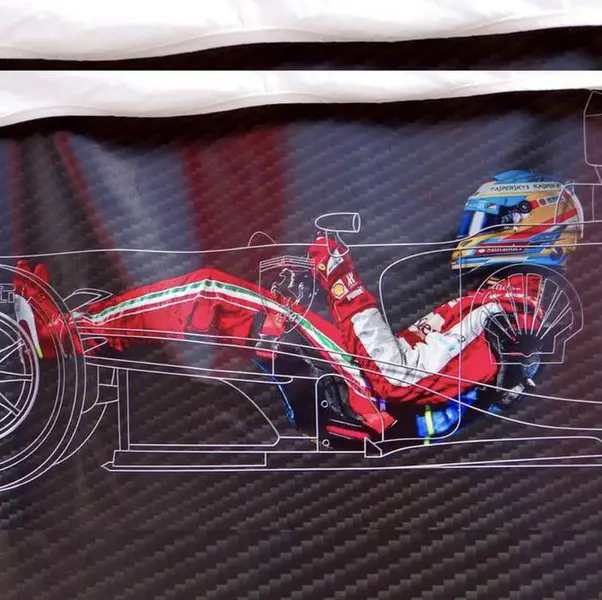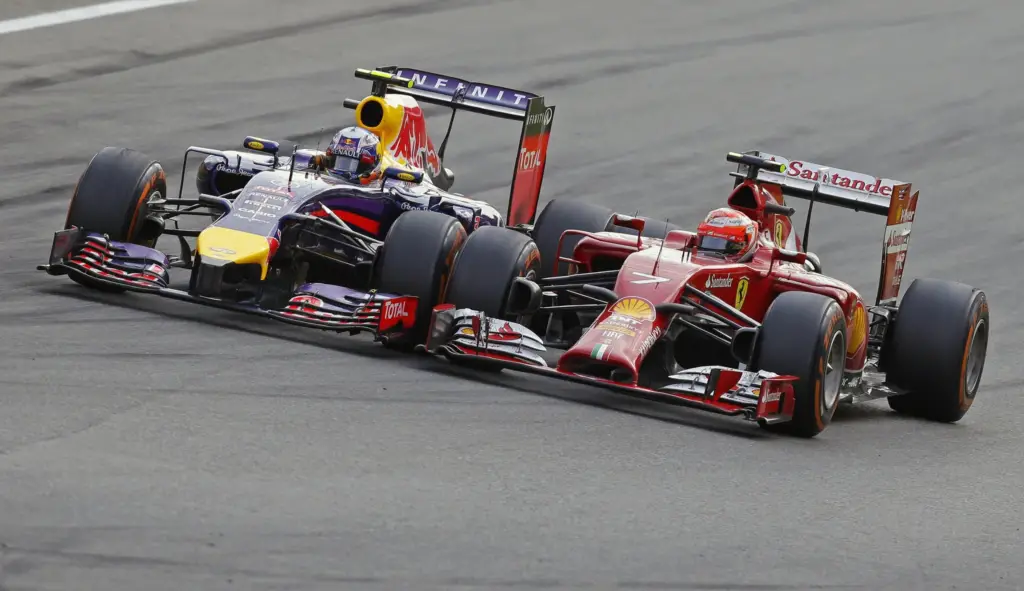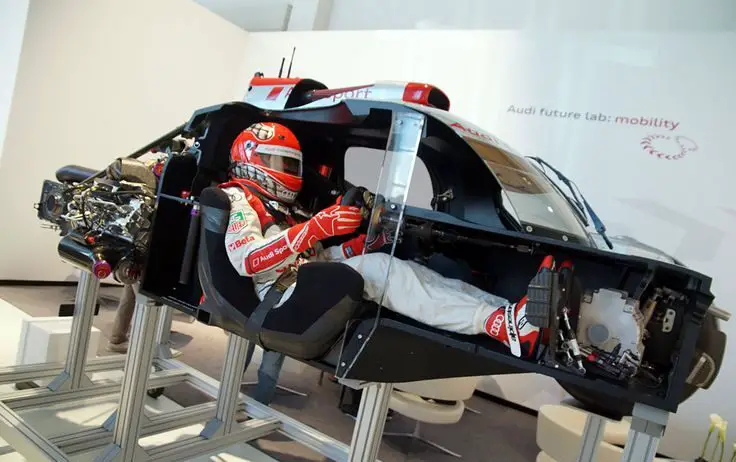When you watch F1 drivers in practice sessions it’s common to notice the presence of a “pedal cam.” These cameras provide viewers, drivers and their engineers with a clear view of how drivers utilize their feet. This raises the question: Do F1 Drivers Use Both Feet when driving?
Formula 1 drivers use both feet while driving. This technique is known as left-foot braking and is universally adopted by all Formula 1 drivers. Left-foot braking is a standard practice in the world of Formula 1 racing.
In F1 racing cars are meticulously engineered for high-speed performance, optimal braking and cornering capabilities. They are also equipped with advanced electronic systems. Despite this the skill of the driver remains paramount. The techniques employed by drivers significantly influence a Formula 1 car’s performance during a race. One such technique is left-foot braking, a crucial skill in an F1 driver’s arsenal.
F1worldwide.com also recommends the following articles
- How F1 Brakes Work – The Ultimate Guide
- The Ultimate Guide to F1 Gears
- Inside The F1 Steering Wheel: The Ultimate Control Panel For Racecar Drivers
Do F1 Drivers use Both Feet?
When you begin your journey as a new driver, a multitude of rules and guidelines are ingrained into you. These rules are designed to ensure safe and efficient driving practices.
Some of these include
- Keeping your hands positioned at ten and two on the steering wheel.
- Adjust your rearview mirror every time you enter the vehicle.
- Adhere to traffic signals.
A fundamental rule you learned in driver’s ed was to use your right foot to for the brake and accelerator.
F1 Drivers use Both Feet Because that’s how F1 Cars are Designed

In modern Formula 1 cars, there is no clutch pedal. Instead, gear changes are executed through paddles located on or near the steering wheel, with clutch control managed electronically.
The absence of a clutch pedal allows F1 drivers to dedicate one foot to the accelerator and the other to the brake. The accelerator pedal is typically on the right, while the brake pedal is on the left.
Every modern Formula 1 car is designed for left-foot braking, with the brake pedal exclusively operated by the left foot. F1 cars have bracing plates around the pedals, ensuring that the driver’s foot remains firmly on the appropriate pedal. There is no footrest or any other space to place the left foot in the footwell of modern F1 cars.
The design ensures that the left foot is always poised for braking action. It eliminates any opportunity for the driver to rest it.
Why Do F1 Drivers Use Their Left Foot For Braking?
This technique offers several advantages, enhancing their performance on the track:
It Is Easier To Accommodate In The F1 Cars Design
F1 cars do not have enough space for the F1 drivers to use one foot for both pedals. One of the feetfoot would be in the way. As a result, F1 cars have two pedals, which are shaped to fit drivers’ feet.
Each of the driver’s legs has a small channel in the nose of the car. At the end is a pedal – the throttle (right leg) and the brake (left leg).

The brake pedal is on the left, and the gas pedal is on the right. Ferrari has a third “pedal” to activate/deactivate DRS.
When the driver lifts his foot from the DRS button, the Rear Wing Top Flap will return to its normal position, creating downforce. The differential helps to smooth the transition and re-attach the airflow before braking.
F1 Drivers use Both Feet to Maintain Higher Cornering Speeds
Left-foot braking allows drivers to sustain higher speeds while navigating corners, contributing to quicker lap times.
Left foot braking is often used by the F1 driver to finely balance engine torque vs. RPM. This controls the weight distribution and balancing grip front to rear. This becomes a delicate dance between the gas pedal and the brake.
Brakes are generally biased towards the front. This makes it possible to use the throttle to rotate the rear around the front to improve tun-in. It is especially true on tight, low-speed corners, or to balance the car in long, high-speed corners.
F1 Drivers use Both Feet for Faster Reaction Times

Having the left foot hovering over the brake pedal all the time means that there is no delay in transferring the foot from the gas pedal to the brake.
This level of response time is critical for drivers who may be racing within inches of other cars traveling at more than 200 mph.
F1 Drivers use Both Feet for Brake Heat Management
Formula 1 cars employ carbon brakes that require temperatures around 300°C (572°F) to function effectively.
Left-foot braking helps the driver maintain optimal brake temperature, even during periods of low brake usage or adverse weather conditions.
F1 Drivers use Both Feet for Throttle Control
Left-foot braking ensures that the driver never has to lift their foot from the throttle, which is crucial for maintaining precise control over the car’s speed.
As a result, left-foot braking is an indispensable technique for every Formula 1 driver, as it directly impacts their lap times. Drivers who do not utilize left-foot braking are likely to achieve slower lap times.
It’s Safer To Use The Left Foot For Braking
It’s safer because the drivers can’t hit the throttle instead of the brake by mistake.
Most F1 Drivers use Both Feet because they Come from a Karting Background
Most drivers come from driving go-karts where you can only use your left foot to brake. The steering column separates both of the driver’s legs and prevents the feet from being able to cross over between pedals.
Conclusion
Formula 1 drivers consistently employ both feet when driving, using their right foot for the throttle and their left foot for braking. This technique is deeply ingrained in Formula 1 racing to the extent that modern F1 cars are purpose-built for left-foot braking.
There are no clutch pedals, so pedal configurations are designed to accommodate this technique. Left-foot braking is instrumental in enhancing control, cornering speed, and brake performance.
It makes it one of the defining factors in achieving top positions in Formula 1 races. So, the next time you watch pedal-cam footage from an F1 driver, pay attention to their precise footwork, and you’ll understand the critical role this technique plays in achieving the best possible lap times.

